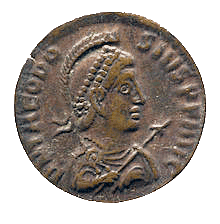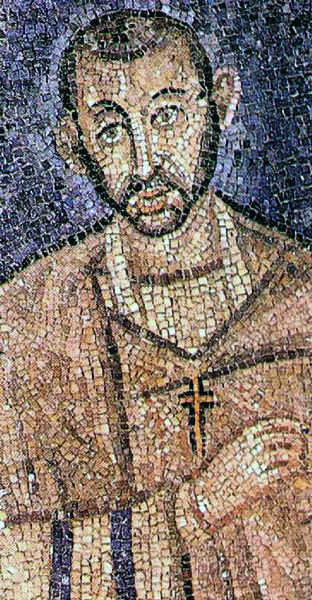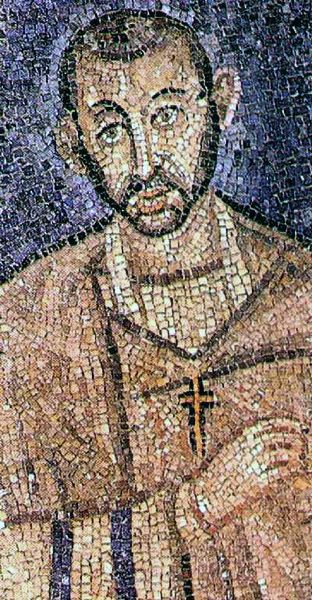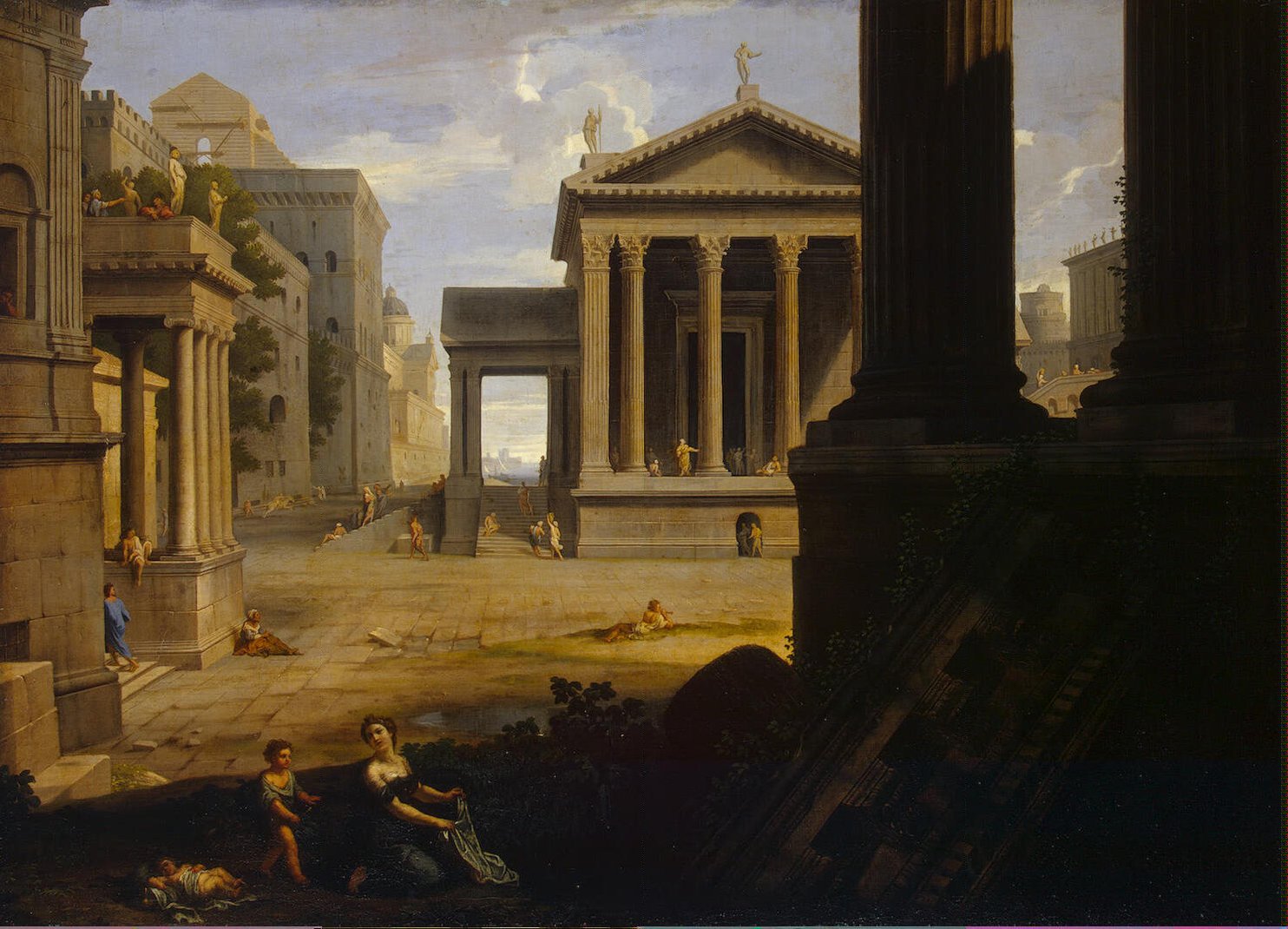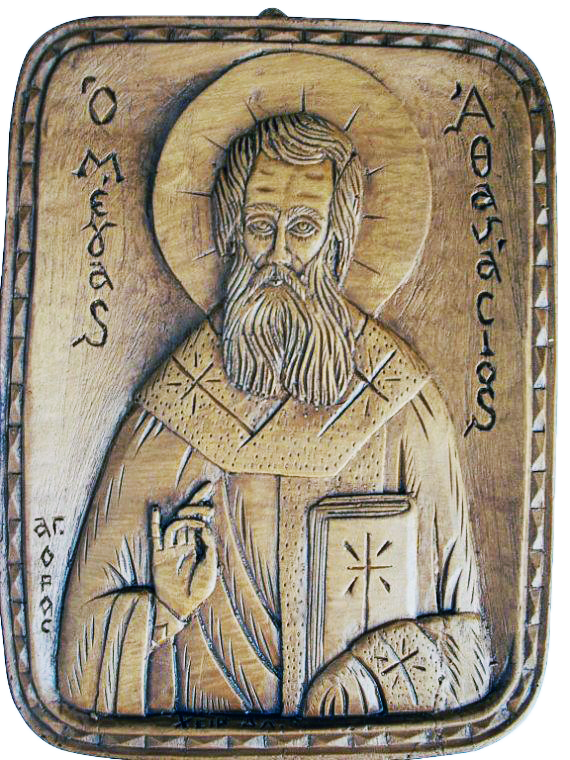Below, an abridged translation from the first volume of Karlheinz Deschner’s Kriminalgeschichte des Christentums (Criminal History of Christianity). For a comprehensive text that explains the absolute need to destroy Judeo-Christianity, see here. In a nutshell, any white person who worships the god of the Jews is, ultimately, ethnosuicidal.
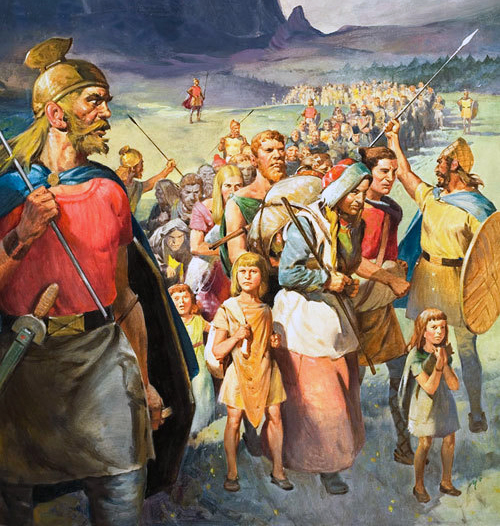 The Goths—Gutans or Gut-þiuda in their language—were the main people of the East Germans. Coming from Sweden, Gotland, Östergötland or Västergötland, they settled on the lower Vistula in the ‘transition period’, about the year 150 on the Black Sea. In the middle of the 1st century they split into Eastern and Western Goths (Ostrogoths, of austro, ‘bright’, and Visigoths, from wisi, ‘Good’), although they continued to be considered as a single people and usually called themselves only Goths. The Ostrogoths settled between the Don and the Dnieper (in present-day Ukraine), and the Visigoths between it and the Danube, from where they spread to the Balkans and Asia Minor, historians citing here generally the year 264. Dacia and Moesia (approximately the current Romania, Bulgaria and Serbia) were constantly under their pressure. In the year 269 Emperor Claudius II defeated them, Constantine often fought against them, and in 375 both towns (except the Catholic Crimean Goths, who remained there until the sixteenth century) were expelled by the Huns, who were advancing towards West. This tribe of nomads from the interior of Asia, were defeated and expelled in turn by the Chinese and only lived on horseback—’animals of two legs’ as Ammianus wrote—, advancing irresistibly from the northern shore of the Caspian Sea, extending the Russian plain and conquering a gigantic empire. Around 360 they had crossed the Don and reached Hungary by 430. However, allied with the Visigoths, the imperial general Flavius Aetius—who had sought and found protection among the Huns in the past—, defeated them in 451 in Gaul, in the Battle of the Catalaunian Plains. A few years later their king died, and more quickly than they had arrived, they largely withdrew towards Asia, in the Pontic steppes, the North Caucasus and the Sea of Azov. They were disbanded into several tribes and were henceforth known under the new name of Bulgarians.[1]
The Goths—Gutans or Gut-þiuda in their language—were the main people of the East Germans. Coming from Sweden, Gotland, Östergötland or Västergötland, they settled on the lower Vistula in the ‘transition period’, about the year 150 on the Black Sea. In the middle of the 1st century they split into Eastern and Western Goths (Ostrogoths, of austro, ‘bright’, and Visigoths, from wisi, ‘Good’), although they continued to be considered as a single people and usually called themselves only Goths. The Ostrogoths settled between the Don and the Dnieper (in present-day Ukraine), and the Visigoths between it and the Danube, from where they spread to the Balkans and Asia Minor, historians citing here generally the year 264. Dacia and Moesia (approximately the current Romania, Bulgaria and Serbia) were constantly under their pressure. In the year 269 Emperor Claudius II defeated them, Constantine often fought against them, and in 375 both towns (except the Catholic Crimean Goths, who remained there until the sixteenth century) were expelled by the Huns, who were advancing towards West. This tribe of nomads from the interior of Asia, were defeated and expelled in turn by the Chinese and only lived on horseback—’animals of two legs’ as Ammianus wrote—, advancing irresistibly from the northern shore of the Caspian Sea, extending the Russian plain and conquering a gigantic empire. Around 360 they had crossed the Don and reached Hungary by 430. However, allied with the Visigoths, the imperial general Flavius Aetius—who had sought and found protection among the Huns in the past—, defeated them in 451 in Gaul, in the Battle of the Catalaunian Plains. A few years later their king died, and more quickly than they had arrived, they largely withdrew towards Asia, in the Pontic steppes, the North Caucasus and the Sea of Azov. They were disbanded into several tribes and were henceforth known under the new name of Bulgarians.[1]
The Goths of the Balkans, the Lower Danube and the shores of the Black Sea were soon ‘converted’, the first among the Germans. This began in the 3rd century through contacts with the Romans and with captives. In the 4th century there was a notable increase of Christians among the Visigoths. In the year 325 the bishopric of Gomia already exists, under the orthodox bishop Theophilus; one of the participants in the Council of Nicaea. In 348 there is a persecution of Christians and in 369 a second one, which lasts three years. However, soon after most of the Visigoths are Christians. The Ostrogoths, on the other hand, if we give credence to Augustine, when penetrating Italy in 405 under King Radagaisus were still pagans; while in 488, when they invaded Italy with Theodoric, they were already Christians.[2]
The persecution of 348, led by a ‘judge of the Goths, without religion and profaner of God’, that is, a pagan, led to the expulsion of Ulfilas, the author of the Gothic Bible, consecrated around 341 by Eusebius of Nicomedia as ‘bishop of Christians in the land of the Goths’. With him a group of his followers fled, to whom Emperor Constantius II settled south of the Danube, in the province of the Lower Moesia, where their descendants lived for two centuries.[3]
The second persecution against the Christians under the Visigoths (in 369-372) was led by the prince Athanaric. It is perfectly understandable that already the ancient authors were fascinated with a man who, for example, refused to address Emperor Valens with the treatment of Basileus, arguing that he preferred the title of judge, which embodies wisdom, while the king only the power. The second persecution was not solely due to questions of faith. It was mainly an anti-Roman reaction and was closely related to the war between Goths and Romans between 367 and 369, although evidently also with the struggle for power between the princes Athanaric and Fritigern, the latter representing a policy favourable to the Romans and the Christians.[4]
After a meticulous preparation, Valens crossed the Danube in the year 367 and resumed a fight against the Goths that Constantine had already initiated, ending it in 332 by means of a formal treaty of peace with the Visigoths. Valens, without the warrior carving of the ‘great emperor’, ravaged the country, went hunting the heads of an enemy in disarray, but failed to reach the bulk of their opponents, as Athanaric always managed with great skill to flee to the Carpathians. And although in 369 he stopped with a part of his people and was defeated, it was so undecided that Valens had to accept his refusal to step on the Roman ground and had to spend a whole September day negotiating in a boat anchored in the river. Finally, the Gothic prince had free hands to dominate the adversaries in his own town, which led to three years of persecution.[5]
The reign of Athanaric did not tremble until the Huns overwhelmed the Ostrogoths and the Visigoths, at which time Athanaric and Fritigern, in spite of their enmity, fought side by side against the powerful invaders, and apparently the Ostrogothic king Ermanaric committed suicide in desperation. One part of his people were subjugated while the other crossed the Dnieper and fled towards the Visigoths. However, the defence sank before the hurricane of the Huns. With Athanaric they fled again to the impassable Carpathians. (In 1857 the workers who built a road there found, near a ruined fortress in Pietroasele, the Visigoth ‘treasure of the crown’. In a choker the following runic inscription appeared: utani othal ik im hailag: that is, a treasure of the Goths, I am invulnerable.) Defeated again, between forty and seventy thousand Visigoths fled to the south and asked in 376 Emperor Valens to admit them into the Roman Empire.[6]
While Athanaric left Gut-þiuda, the country of the Goths, and settled in the territories that would later be Transylvania, Valens authorised the immigration of the great mass of the Goths ruled by Fritigern as foederati; that is, colonists with the obligation to go to the army when they were needed: an ancient method of obtaining peasants, but above all soldiers. In the autumn of 376 they crossed the river, an event of great historical significance, probably by Durostorum (Silistra): a long row of chariots, often carrying the ancient pagan idols but also with some bishop among them, a Christian priest. And Fritigern, who with many of his own had become Arian in 369, promised Valens the ‘conversion’ of the part of his people that was still pagan, something that pleased the ears of the fanatical ‘heretic’, but that for the Goths was more a question of opportunism: misery and the Huns on the one hand and the attractive Roman Empire on the other. However, their exploiters and their officials, the monopolists of food and hunger caused that not a few Goths, even some bosses, sell as slaves their own wives and children, even in exchange for dog meat, a business quite common on the Danube. The thrust of the new ‘barbarians’, Visigoths, Taifals, Alans, and Huns on the open border pushed the newcomers, who occupied all of Thrace, to rebel and march on Constantinople, joining them bands of Huns, Alans and also slaves, peasants and workers of the mines of the country.[7]
_______________
Note of the translator: The footnotes still lack the general bibliography, which will be ready as I finish the abridgement of this first volume.
[1] Plin. nat hist 37, 35; 4.28. Tac. Germ. c 44. Socr. 6.34. Ammian 31.2.1 f; 31.3 f. Philostorg. 9.17. Stein, Vom römischen 289 f. Hauptmann 115 f. Schmidt, Ostgermanen 195, 201, 243. K.-D. Schmidt, Die Bekehrung 205 f, 215, 316 f. Capelle 185 f. Historically, Weibull (Die Auswanderung der Goten aus Schweden, 1958) is of special importance. Ferdinandy 186 f. Vemadsky 258 f. Dannenbauer, Entstehung 110 f, 193 f. Conrad, Deutsche Rechtsgeschichte 77. Maier, Die Verwandiung 109 f, 130. A. v. Müller, Geschichte unter useren Füssen 114 f. Rice 149. Schwartz, Goten 13 f, 142 f. Bullough, Italien 167. Wagner, getica 214. Claude, Westgoten 7. Stockmeier, Bemerkungen zur Christianisierung 316 f.
[2] Mansi Collect. Consil. II 214. Schmidt, Die Niedergang Roms 427 f. Aland, Glaubenwechsel 58 f. Stockmeier, Bemerkungen zur Christianisierung 315 f. Apparently, the first missionary of the Visigoths was one Eutyches, ibid.
[3] Jord. Get 267 (MG Auct., Ant. V 1,127). Lex dtv Antike, Religion H 311 f. Thompson, The Visigoths 94 f. Fridh, 130 f. Wolfram, Gotische Studien lis. Schäferdiek, Wulfila 107 f, especially 117.
[4] Ammian. 27.5.9. The sources in Jones, Prosography 120 f. Lex dtv Antike, Geschichte 1155. K. K. Klein Frithigem 34 f. Aland, Glaubenswechsel 59. Wolfram, Gotische Studien 2 f, 13. Handbuch der Kirchengeschichte II / l, 235.
[5] Ammian. 31,4,13. K. K. Klein Frithigem 38 f. Wolfram, Gotische Studien 4.9 f.
[6] Ammian. 31.3,4. Socr. e.h. 4.33 f. Soz. 6.37. According to Dudden 1165 they were ‘nearly a million persons of both sexes’. Giesecke, Die Ostgermanen 62 f. Schmidt, Die Bekehrung 223 f. Capelle 185 f. Thompson, Attila 23. Ensslin, Einbruch 101. Aland, Glaubenswechsel 60. Altheim, Hunnen I 351. Dannenbauer, Entstehung I 195. A. v. Müller, Geschichte unter unseren Füssen 115. Maier, Verwandiung 110.
[7] Eunap. fr. 42 f; 55. Ammian. 26, 10, 3; 27.4; 31.3 f. Zos. 4.10 f. Socr. e.h. 4.33 f. Soz. 6.37 f. Orog 7.32 f. Seeck, Untergang V 93 f, 101 f. Schwartz, Zur Geschichte des Athanasius 370. Delbrück, Kriegskunst II 280. Stein, Vom römischen 286 f. V. Campenhausen, Ambrosius 37 f. Schmidt, Die Bekehrung 242 f. The same, Die Ostgermanen 233. Giesecke, Die Ostgermanen 69 f. Capelle 172 f. Baetke, Die Aumahme17. Komemann, Weltgeschichte II, 352. The same, Römische Geschichte II 418 f. Ostrogorsky, Geschichte des byzantinischen Staates 43. Ensslin, Einbruch 100 f. Vogt, Der Niedergang Roms 310 f, 428. Dannenbauer, Entstehung 1195. Maier, Verwandiung 110. Claude, Westgoten 14 f, 26 f. Nehisen 161. Aland, Glaubenswechsel, 59 f. Wolfram, Gotische Studien 10.
